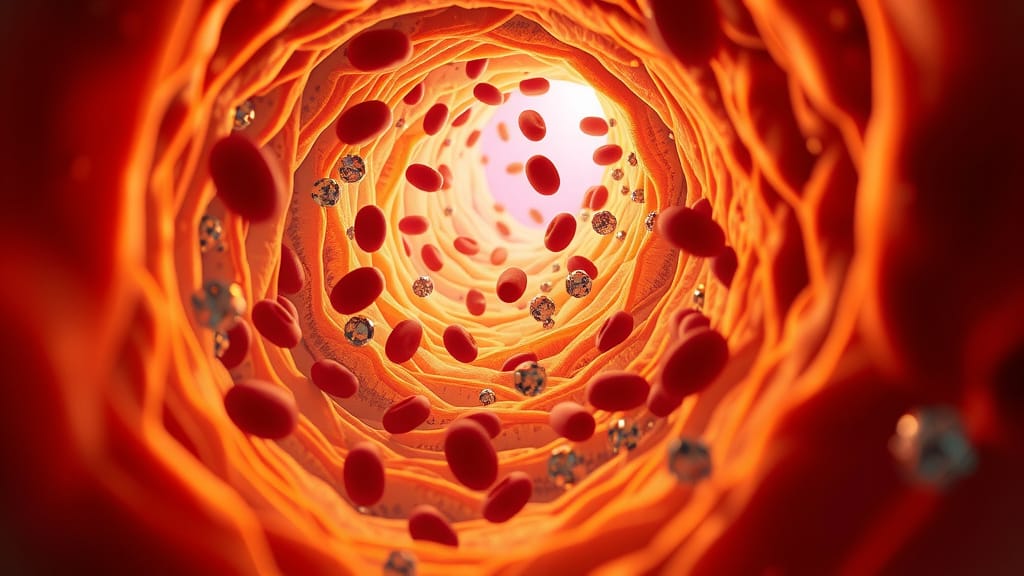An idea on how to remove plastic from the human body
 This regimen is conceptual and would require significant research and clinical trials before being considered safe or effective.
This regimen is conceptual and would require significant research and clinical trials before being considered safe or effective.
The Three-Pillar Plastic Elimination Regimen
This regimen is based on three core principles: enhancing natural filtration, targeted binding and removal, and cellular repair and regeneration.
Pillar 1: Enhanced Natural Filtration
The body's primary filtration systems are the liver and kidneys. This pillar aims to boost their efficiency in capturing and processing plastic particles for excretion.
Designed Intervention: "Plasti-Sorb" Liver and Kidney Boost
This would be a bi-monthly intravenous infusion designed to augment the filtration capabilities of the liver and kidneys.
- Mechanism of Action:
- Engineered Probiotics: A cocktail of genetically engineered gut bacteria would be introduced. These bacteria are designed to produce enzymes that can begin to break down certain types of plastic polymers into smaller, more manageable compounds directly in the gut, preventing their initial absorption.
- Hepatic Nanobots: Microscopic, biocompatible nanobots would be delivered to the liver. These nanobots are coated with receptors that have a high affinity for common plastic polymers like polyethylene, polystyrene, and PVC. They would patrol the sinusoids of the liver, binding to plastic particles that are circulating in the bloodstream.
- Kidney-Targeted Chelators: A specialized chelating agent would be infused. This molecule is designed to bind to plastic-associated heavy metals and other toxins that may have adsorbed onto the surface of plastic particles. It is also engineered to be readily filtered by the glomeruli of the kidneys, carrying the bound plastics and toxins out in the urine.
Supporting Lifestyle Regimen:
- Diet: A diet rich in antioxidants and sulfur-containing compounds is essential. This includes cruciferous vegetables (broccoli, cauliflower), alliums (garlic, onions), and high-fiber foods to support gut health and regular excretion.
- Hydration: Increased water intake is crucial to support kidney function and the flushing of filtered waste products. Aim for 3-4 liters of purified water daily.
Pillar 2: Targeted Binding and Removal
This pillar focuses on actively seeking out and removing plastic particles that have already lodged themselves in tissues throughout the body.
Designed Intervention: "Cyto-Cleanse" Phased Therapy
This is a two-part therapy administered quarterly.
Phase 1: Mobilization:
- Sonication Therapy: The patient would undergo targeted, low-frequency ultrasound therapy on areas of known or suspected high plastic accumulation (e.g., adipose tissue, lungs). The mechanical vibrations would help to dislodge plastic particles from the extracellular matrix, encouraging their reentry into the bloodstream or lymphatic system.
Phase 2: Systemic Capture:
- Magnetic-Core Nanoparticles: Following sonication, an infusion of iron-core nanoparticles coated with plastic-binding molecules would be administered. These particles circulate throughout the body, binding to the newly mobilized plastic debris.
- Extracorporeal Filtration: Two days after the nanoparticle infusion, the patient would undergo a process similar to dialysis. Blood would be drawn and passed through an external machine containing a magnetic filter. This filter would capture the nanoparticle-plastic complexes, effectively "scrubbing" the blood clean before it is returned to the body.
Pillar 3: Cellular Repair and Regeneration
The presence of plastic particles can cause chronic inflammation and cellular damage. This final pillar is designed to repair this damage and enhance the body's innate healing abilities.
Designed Intervention: "Regenerate" Gene-Activating Serum
This would be a daily oral supplement containing a proprietary blend of bio-active compounds.
- Mechanism of Action:
- Nrf2 Pathway Activation: The serum contains compounds like sulforaphane and curcumin, which are potent activators of the Nrf2 genetic pathway. This pathway upregulates the production of a wide range of antioxidant and detoxifying enzymes, protecting cells from oxidative stress caused by plastics.
- Senolytic Agents: The formulation includes senolytics, such as quercetin and dasatinib, which are designed to selectively clear out senescent (or "zombie") cells. These are cells that have stopped dividing and contribute to inflammation and aging, and their accumulation can be exacerbated by chronic exposure to foreign materials like plastics.
- Enhanced Autophagy: The serum would also promote autophagy, the body's process of cleaning out damaged cell components. By boosting this cellular "housekeeping," the body can more effectively break down and recycle organelles that may have been damaged by internalized plastic particles.
Supporting Lifestyle Regimen:
- Intermittent Fasting: Practicing a 16:8 intermittent fasting schedule (fasting for 16 hours and eating within an 8-hour window) has been shown to naturally increase autophagy.
- Targeted Supplementation: Daily intake of high-quality omega-3 fatty acids to reduce inflammation, and a broad-spectrum multivitamin to ensure the body has all the necessary co-factors for enzymatic detoxification processes.
- Infrared Sauna: Regular use of an infrared sauna may help to mobilize toxins, including some plastic-associated chemicals, for excretion through sweat.
By combining these advanced bio-engineered interventions with supportive lifestyle modifications, this regimen represents a comprehensive and aggressive approach to clearing the body of plastic contamination and mitigating its harmful effects.